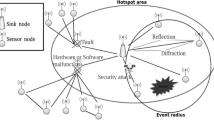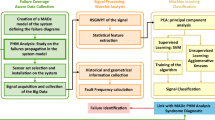Abstract
Condition monitoring of a system is in need of an efficient sensor network for detecting system faults in early stages. Sensor is a silent-failure component as it is not monitored in the main system misleading in estimation of the system health state. Then, failure-causes of the system are not detected due to missed detection. A risk-based measure is proposed in this research to take into account the consequence of sensor missed-detection. All possible combinations are determined for failure-causes as components state vectors. The probability of missed-detection is estimated by applying occurrence probability of failure causes and degradation-based failure probability of sensors. First, a sensor characteristic is selected through which the degradation process is affected. Then a degradation model is developed to calculate the sensor time to failure. The consequences of missed-detection are also corresponding quantifiable potential losses through both failure costs and maintenance expenditure. Finally, all feasible sensors placement scenarios are compared due to proposed risk measure. As a case study, sensor network of steam turbine condition monitoring is selected. Various sensor placement scenarios of steam turbine are prioritized based on the risk index and results are discussed.



Similar content being viewed by others
References
Aven T, Jensen U (1999) Stochastic models in reliability. Springer, New York
Balaban E, Saxena A, Bansal P, Goebel KF, Curran S (2009) Modeling, detection and disambiguation of sensor faults for aerospace applications. IEEE Sens J 9(12):1907–1917
Bloch HP, Singh MP (2009) Steam turbines: design, applications, and rerating, 2nd edn. McGraw-Hill, New York
Da Silva JV, Saxena A, Balaban E, Goebel K (2012) A knowledge-based system approach for sensor fault modeling, detection and mitigation. Expert Syst Appl 39:10977–10989
Denson W, Chandler G, Crowell W, Wanner R (1991) None-electronic parts reliability data. Reliability Analysis Center, Rome, NY 13440-8200
Duan R, Ou D, Dong D, Zhou H (2011) Optimal sensor placement for fault diagnosis based on diagnosis cost specifications. J Comput Inf Syst 7(9):3253–3260
Gunnarsson A (2013) Maintenance of the steam turbines at Hellisheidi power plant, Faculty of Industrial Engineering. M.S. thesis, Mechanical Engineering and computer science, School of Engineering and Natural Science, University of Iceland, Iceland
Jackson CS, Modarres M (2016) Sensor-based bayesian inference and placement: review and examples. Int J Perform Eng 12(1):13–32
Jackson C, Mosleh A (2012) Bayesian inference with overlapping data for systems with continuous life metrics. Reliab Eng Syst Saf 106:217–231
Kahle W, Wendt H (2000) In: Limnios N, Nikulin M (eds) Statistical analysis of damage processes, recent advances in reliability theory: methodology, practice and inference. Birkh Auser, Boston
Mcpherson JW (2010) Reliability physics and engineering: time-to-failure modeling, 1st edn. Springer, New York
Panchangam S, Naikan NA (2012) Failure analysis methods for reliability improvement of electronic sensors. Int J Recent Technol Eng 1(3):83–87
Park NC, Oh WW, Kim DH (2013) Effect of temperature and humidity on the degradation rate of multicrystalline silicon photovoltaic module. Int J Photoenergy 2013, ID 925280
Poore R, Walford C (2008) Development of an operations and maintenance cost model to identify cost of energy savings for low wind speed turbines. Subcontract report, National Renewable Energy Laboratory (NREL), U.S. Department of Energy
Pourali M, Mosleh A (2012) A Bayesian approach to functional sensor placement optimization for system health monitoring. IEEE conference on prognostics and health management, Denver, USA
Pourgol-Mohammad M, Salehpour-Oskouei F (2013) Failure vs. deficiency in mechanical systems; characteristics and clarification of a confusion. In: Proceeding of ESREL 2013 conference, Amsterdam, The Netherlands
Salehpour-Oskouei F, Pourgol-Mohammad M (2015) Optimal sensor placement for efficient fault diagnosis in condition monitoring process; a case study on steam turbine monitoring. Current trends in reliability, availability, maintainability and safety, part of the series lecture notes in mechanical engineering, pp 83–97
Salehpour-Oskouei F, Pourgol-Mohammad M (2016) Fault diagnosis improvement using dynamic fault model in optimal sensor placement: a case study of steam turbine. Qual Reliab Eng Int. doi:10.1002/qre.2031
Author information
Authors and Affiliations
Corresponding author
Rights and permissions
About this article
Cite this article
Salehpour-Oskouei, F., Pourgol-Mohammad, M. Risk assessment of sensor failures in a condition monitoring process; degradation-based failure probability determination. Int J Syst Assur Eng Manag 8, 584–593 (2017). https://doi.org/10.1007/s13198-017-0573-0
Received:
Revised:
Published:
Issue Date:
DOI: https://doi.org/10.1007/s13198-017-0573-0




